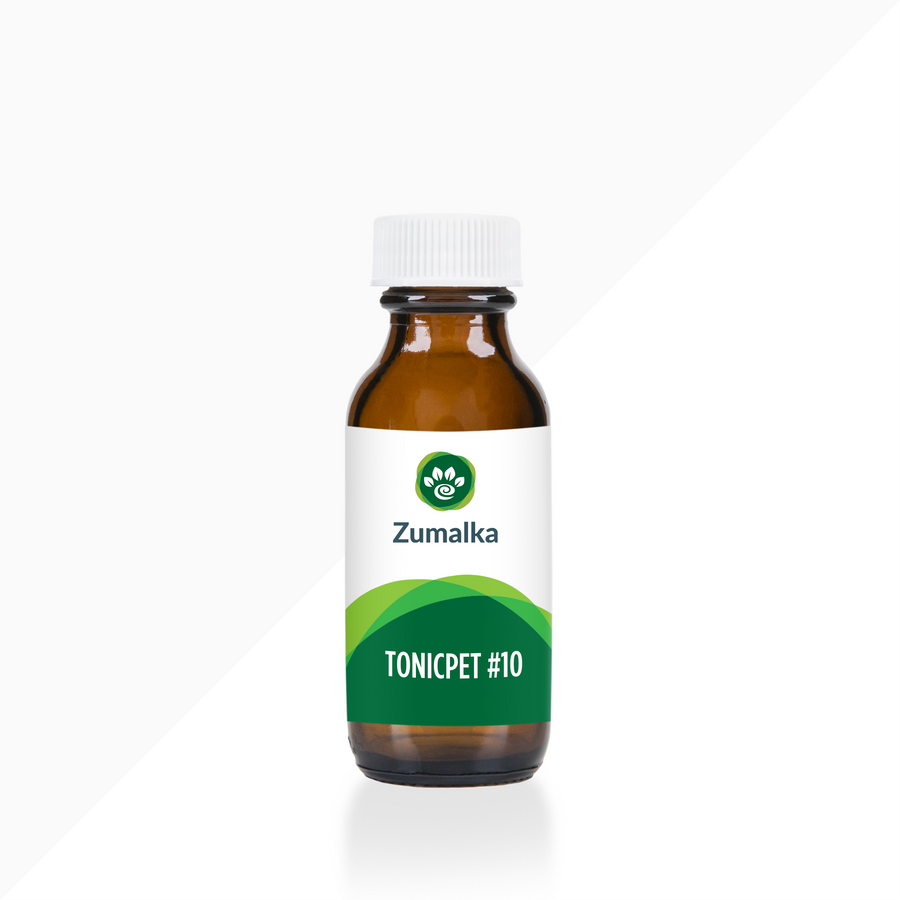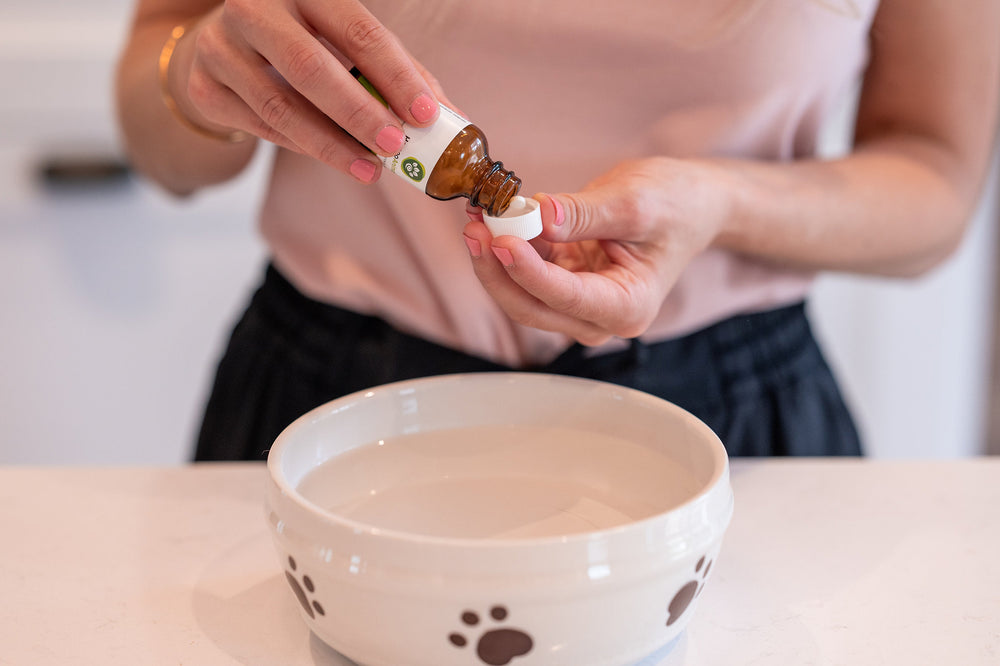Vet-Approved Natural Remedies for Low Blood Sugar in Dogs
List of Contents
- What are the Symptoms of Hypoglycemia in Dogs?
- How Do You Naturally Manage Dog Low Blood Sugar?
- How is Dog Hypoglycemia Diagnosed and Treated by a Vet?
- Can Hypoglycemia in Dogs Be Managed and Prevented at Home in the Long Term?
- What are the Causes of Dog Hypoglycaemia?
- When Should You Seek Veterinary Care for Canine Low Blood Sugar?
- FAQs
While hypoglycemia, or low blood sugar, is rare in dogs, it can still occur unexpectedly due to factors like missed meals, strenuous activity, or underlying health conditions. In severe cases, it may cause fainting or pose a serious health risk.
This is why dog parents need to recognize the signs of hypoglycemia and respond quickly. In this guide, you'll not only learn how to do that but also explore natural ways to manage the condition and keep your pet safe and healthy.
What are the Symptoms of Hypoglycemia in Dogs?

Interestingly, the clinical symptoms of hypoglycemia in dogs can sometimes be subtle or even unnoticeable. If the drop in blood sugar is mild, your dog may not show any obvious signs or symptoms.
However, if blood glucose levels drop significantly, dogs may exhibit a range of symptoms, including:
- Unusual behavior
- Disorientation
- Extreme lethargy
- Seizures
- Confusion
- Muscle twitches
- Weakness
- Incoordination
- Unconsciousness
- Blindness
- Trembling
- Loss of appetite
- Vomiting and diarrhea
As previously mentioned, hypoglycemia in dogs can have serious consequences and, in some cases, may become life-threatening. If your pet shows signs of low blood sugar, prompt and appropriate action is essential to ensure their well-being.
How Do You Naturally Manage Dog Low Blood Sugar?

Here are the four best ways to support your dog during a hypoglycemic episode. It's important to note that “management” and “treatment” are not the same—while these steps can help stabilize your pet, a proper diagnosis and treatment plan from a veterinarian is the best place to start.
With that in mind, here are the best natural ways to help manage hypoglycemia in dogs:
#1. Give your dog their normal food.
While it may seem simple, feeding your dog their regular meal is one of the most effective ways to address low blood sugar. In addition, it is important to keep their regular feeding hours and try not to skip any meals. Providing a well-balanced meal can help stabilize their glucose levels and support their recovery.
An important factor to consider is whether your dog can eat. If they refuse food or cannot eat, it's best to move on to the next step. In such cases, you may need to explore alternative ways to stabilize their blood sugar until you can seek veterinary care.
#2. Administer a high-sugar liquid.
Using your fingers or a syringe, gently apply a high-sugar liquid to your dog's tongue, gums, roof of the mouth, and inner cheeks. Take your time and be as gentle as possible to help your pet swallow the liquid calmly and comfortably.
You can use high-sugar liquids such as glucose syrup, corn syrup, honey, maple syrup, or golden syrup. Jam can also be an effective alternative. Make sure the jam you use does not contain xylitol, other artificial sweeteners, or preservatives. Additionally, avoid jellies and jams made from grapes or raisins, as they are toxic to dogs.
If your dog is unable to swallow, gently massage a small amount of liquid, jam, or jelly onto their gums to help with absorption. In severe cases of hypoglycemia, administer 1 gram of glucose syrup or corn syrup per kilogram (2.2 pounds) of body weight.
#3. Keep your dog warm.
Low body temperature—essentially, your dog becoming too cold—can worsen and even accelerate the effects of hypoglycemia. In addition to wrapping them in a blanket, you can use a heating pad to help maintain their body warmth.
You can also use water bottles filled with warm water. However, be cautious—if the water is too hot, it can burn your pet. To prevent this, avoid placing the bottles directly on your pet’s skin.
#4. Check other possible factors for your dog’s condition.
Your pet may be experiencing other health issues that mimic the symptoms of hypoglycemia. Possible risk factors include poisoning—especially from ingesting artificial sweeteners like xylitol—as well as conditions such as Cushing’s disease, trauma, liver disorders, and cancer in dogs.
After taking these steps, contact your veterinarian immediately and be prepared to transport your dog to the clinic. Bring a blanket to help keep them warm during the trip, and gently comfort them along the way to reduce stress and keep them calm.
How is Dog Hypoglycemia Diagnosed and Treated by a Vet?

A veterinarian will usually start with a thorough physical exam and a review of your dog’s medical history. They may also recommend diagnostic tests to better assess your pet’s condition and determine the underlying cause.
Here are some common diagnostic tests your veterinarian may perform:
- Thyroid function test – to assess thyroid health
- Electrolyte tests – to detect any imbalances
- Urine analysis – to screen for kidney disease and urinary tract infections (UTIs)
- Complete blood count (CBC) – to check for blood-related health issues
- Chemistry panel – to evaluate pancreatic, liver, and kidney function
- Ultrasound examination – to check for tumors or other abnormalities
- Blood glucose measurement – to assess blood sugar levels
- Cortisol test – to rule out Addison’s disease.
For treatment, your veterinarian may administer glucose supplements either orally or through an IV. If diagnostic tests reveal an underlying health condition contributing to the hypoglycemic episode, additional medications may be prescribed as needed.
Can Hypoglycemia in Dogs Be Managed and Prevented at Home in the Long Term?
Yes! There are several effective ways to manage low blood sugar in dogs at home. If your pet has experienced a hypoglycemic episode, here are some practical tips to help you manage the condition in the long run.
Adjust your pet’s diet.
Proper nutrition is vital for your dog's overall health and well-being, regardless of age, breed, sex, or size. One effective way to manage canine hypoglycemia is by making strategic adjustments to their diet.
- Provide balanced, nutritious meals daily to support overall health.
- Establish a consistent feeding schedule and stick to it every day.
- For small puppies, offer frequent small meals to help maintain stable blood sugar levels.
- For active dogs, ensure they eat before high-energy activities to prevent blood sugar drops.
- Keep your dog well-hydrated, as proper hydration is essential for blood sugar regulation.
- Support immune system health with high-quality natural products like Zumalka's IMMUNOPET.
Stay vigilant for any signs of hypoglycemia in your dog
Hypoglycemia can sometimes recur, so if your dog shows signs of low blood sugar, use the techniques we've covered. No matter how mild the episode may seem, always treat it as a medical emergency to ensure your pet's safety.
Beyond ensuring your dog’s health and well-being through a proper diet and monitoring for signs of low blood sugar, knowing how to respond to hypoglycemic episodes effectively can help maintain their overall quality of life.
What are the Causes of Dog Hypoglycemia?

Interestingly, hypoglycemia in dogs does not just happen. Several factors can trigger this health problem. Below you will find some of the most common causes:
- Addison’s disease
- Diabetes mellitus
- Exposure to artificial sweeteners
- Liver disorder
- Sepsis
- Pancreatic disease or tumors
- Portosystemic shunts
- Fasting combined with high-impact activities
Puppies under 3 months old may have difficulty regulating their blood glucose levels, which can result in hypoglycemia.
This is especially common in toy breeds such as Chihuahuas, Yorkshire Terriers, Pomeranians, Maltese, Toy Poodles, Papillons, Shih Tzus, Pekingese, Japanese Chins, and Miniature Pinschers. In addition to their risk of diabetes, their small liver size may also contribute to the condition.
When Should You Seek Veterinary Care for Canine Low Blood Sugar?
Hypoglycemia in dogs should always be treated as an emergency. If you notice any signs or symptoms, contact your veterinarian immediately. Acting quickly can make all the difference in protecting your dog's health and well-being.
I’d like to emphasize that, in addition to the risk of losing consciousness, untreated hypoglycemia can also lead to seizures and, in severe cases, be life-threatening. Prompt intervention is crucial to keeping your pet safe.
FAQs
What can I give my dog for low blood sugar?
If your dog has low blood sugar, offer a small amount of honey, corn syrup, or sugar water. Gently rub it on their gums, especially honey. Avoid giving liquids too quickly, as your dog may choke or inhale them into the airway. Then, provide a balanced meal and contact your veterinarian immediately for further guidance and care.
How does a dog act when blood sugar is low?
When a dog's blood sugar is low, they may seem weak, confused, shaky, or excessively tired. They might stumble, collapse, or have seizures. If you notice these symptoms, seek veterinary care immediately to ensure their safety and well-being.
How long does a hypoglycemic episode last in dogs?
The duration of a hypoglycemic episode in dogs varies, lasting minutes to hours, depending on severity and treatment. Immediate intervention is crucial—contact your veterinarian promptly to stabilize your dog and prevent serious complications.
What happens when a diabetic dog has very low blood sugar?
When a diabetic dog’s blood sugar drops too low, they may become weak, disoriented, shaky, or even have seizures. Severe cases can lead to unconsciousness. Immediate treatment is crucial—contact your veterinarian right away for guidance.
How do I know if my dog has hypoglycemia?
Symptoms of hypoglycemia in dogs include weakness, tremors, confusion, lethargy, or even seizures. They may seem unsteady or disoriented. If you observe these signs, seek veterinary care immediately to ensure your dog’s safety and well-being.
What are 4 symptoms of hypoglycemia in dogs?
Four common symptoms of hypoglycemia in dogs include weakness, tremors, disorientation, and seizures. They may appear lethargic or unsteady. If you notice these signs, contact your veterinarian immediately to ensure your dog receives proper care.
What do you feed a dog with hypoglycemia?
If your dog has hypoglycemia, apply honey or corn syrup to their gums, then provide a small, nutritious meal. Consult your veterinarian immediately if symptoms persist.
How to lower dog blood sugar quickly?
To quickly reduce high blood sugar in dogs, ensure they stay hydrated, follow their prescribed insulin or medication plan, and encourage light exercise if appropriate. Always consult your veterinarian for the best course of action.
Can stress cause hypoglycemia in dogs?
Yes, stress can contribute to hypoglycemia in dogs, especially in small breeds or puppies. Stress increases energy use, which may deplete blood sugar levels. If your dog is at risk, manage stress and consult your veterinarian for guidance.
How to help a dog with hypoglycemia?
If your dog has hypoglycemia, apply honey or corn syrup to their gums, then offer a small meal. Keep them warm and calm, and contact your veterinarian immediately if symptoms persist or worsen.
Can parasites cause hypoglycemia in dogs?
Yes, parasites can contribute to hypoglycemia in dogs by causing poor nutrient absorption, anemia, or increased energy demands. Puppies and small breeds are especially vulnerable. If concerned, consult your veterinarian for diagnosis and appropriate treatment.
Can dogs sense hypoglycemia?
Yes, some dogs can sense hypoglycemia in humans by detecting changes in scent or behavior. Certain dogs are even trained as diabetic alert dogs to warn their owners of dangerous blood sugar drops.
Can too much sugar give dogs worms?
No, too much sugar does not directly cause worms in dogs. However, excessive sugar can weaken their immune system, making them more vulnerable to infections. Regular deworming and a balanced diet help keep dogs healthy.
What toxins cause hypoglycemia in dogs?
Certain toxins, like xylitol (found in sugar-free products), alcohol, and some medications, can cause hypoglycemia in dogs. If ingestion occurs, seek veterinary care immediately to prevent serious complications and ensure your dog's safety.
Should you give your dog water after throwing up?
After vomiting, offer your dog small amounts of water to prevent dehydration, but don’t let them drink too much at once. Monitor their condition and contact your veterinarian if vomiting persists or worsens.
What happens if a dog has too much sugar?
Too much sugar can cause digestive issues, weight gain, and dental problems in dogs. Over time, it may lead to diabetes or other health concerns. Always provide a balanced diet and consult your veterinarian for additional guidance.
What happens when glucose levels are too high in dogs?
High glucose levels in dogs can cause increased thirst, frequent urination, weight loss, and lethargy. Over time, it may lead to diabetes or other health issues. Consult your veterinarian for proper diagnosis and management.
What is a dog's sugar limit?
Dogs don’t have a specific sugar limit, but excessive sugar can lead to obesity, diabetes, and dental issues. Treats should be minimal, and a balanced diet is best. Consult your veterinarian or pet nutritionist for personalized dietary recommendations.
Can sugar cause seizures in dogs?
Yes, sugar imbalances can trigger seizures in dogs, particularly those with diabetes or hypoglycemia. Sudden blood sugar fluctuations can be dangerous, so consult your veterinarian if your dog shows any concerning symptoms.
Does sugar make dogs hyper?
Sugar may cause temporary energy spikes in some dogs, but it can also lead to obesity and other health issues over time. A balanced diet is key—consult your veterinarian or pet nutritionist for the best nutritional guidance.
What is hunting dog hypoglycemia?
Hunting dog hypoglycemia is a sudden drop in blood sugar during intense activity, causing weakness, confusion, or collapse. It’s common in high-energy breeds. Proper nutrition and rest help prevent it—consult your veterinarian for guidance.
What deficiency causes seizures in dogs?
Seizures in dogs can be caused by deficiencies in calcium, magnesium, sodium, potassium, and thiamine (Vitamin B1). These imbalances affect nerve function and brain health. If your dog has seizures, consult your veterinarian for proper diagnosis.
How can I prevent my dog from having seizures?
To prevent seizures, ensure your dog has a balanced diet, regular exercise, and a low-stress environment. Avoid toxins and manage any medical conditions. A personalized homeopathic approach can help address underlying imbalances that may contribute to seizures. Consulting a homeopath is the best way to develop a tailored treatment plan.
Can low blood count cause seizures?
Yes, a low blood count (anemia) can cause seizures in dogs by reducing oxygen delivery to the brain. If your dog shows seizure activity, consult your veterinarian for more immediate attention.
What are the first signs of diabetes in a dog?
The first signs of diabetes in dogs include excessive thirst, frequent urination, unexplained weight loss, and decreased energy. In addition to veterinary care, a natural approach—such as a balanced, low-carb diet, blood sugar-supporting supplements, and homeopathic remedies—may help promote your dog’s overall health and well-being.
How do you treat hypoglycemia in dogs?
To treat hypoglycemia in dogs, rub honey or corn syrup on their gums, then offer a small meal. Keep them warm and calm as well. In addition to veterinary care, natural approaches—such as a balanced diet, blood sugar-stabilizing supplements, and homeopathic remedies—may help support healthy glucose levels and reduce the likelihood of future episodes.
What not to feed a diabetic dog?
Do not feed a diabetic dog sugary foods, high-carb treats, table scraps, or processed snacks. A balanced diet is essential for managing blood sugar. Always consult your veterinarian or pet nutritionist before adjusting their diet.
What can trigger diabetes in dogs?
Diabetes in dogs can be triggered by genetics, obesity, pancreatitis, hormonal disorders, or certain medications. Maintaining a healthy weight, providing a balanced diet, and scheduling regular vet checkups can help lower the risk and support overall health.
Conclusion
Hypoglycemia, or low blood sugar in dogs, requires immediate attention. Ignoring it can lead to severe complications or even death in some cases. Prompt intervention is crucial to ensure your dog's safety and well-being.
Low blood sugar episodes in dogs can occur unexpectedly, but knowing how to prevent, respond to, and manage them helps protect your pet’s well-being. While veterinary care is essential, understanding at-home management strategies can make a significant difference.









Hi Calvin,
I’m very sorry to hear what your dog is going through! I’ve sent you an email to get some personalized help for him from our Homeopath.
Hi my dog Robbie was having seizures and with our vet he believes it’s Insulinoma. Went to another vet and she did a ultrasound but did not find the pancreas to be inflamed but still believes it’s Insulinoma. She did find some small nodules on his liver. I’m feeding him a raw diet 4 times a day adding sweet potatoes, carrots and Blueberries and having frequently to give him organic raw honey to keep up his blood sugars. Also giving him a mushroom blend, Life Gold from Pet Wellbeing. Was giving him a liquid tumeric but found out it can lower blood sugars and stopped giving it. The vet prescribed Prednisolone and I gave him 1 pill and it seemed to work right away. But I’m scared of the side effects I’m looking hard for a answer in a natural way.
Hi Amy,
I’m so sorry to hear about your dog, that’s such a difficult thing to have to go through.
I have sent you a private email so that we can give you some free suggestions to help him out.
I hope that he can be on the mend soon!
Zumalka
My 11 year old lab mix has been diagnosed with insulinoma. I would love to hear the same advice you gave to Tracey to support him. Thank you!
Dear Tracy,
I am so very sorry to hear about your poor dog. I know this is very difficult for you both. For sure the tips in this article can help with the blood sugar issue, however, the reach will be limited unless we also work on the root cause…. the cancer cells. So, to help you with a more targeted solution for your dog, we have sent you a private email so we can give you some free suggestions.
I hope your dog feels better soon!!
Zumalka
Leave a comment